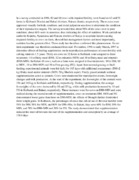| dc.description.abstract | In a survey conducted in 1996, 82 and 60 cows with impaired fertility were found on 63 and 53 farms in Koibatek District and Bahati division, Nakuru district, respectively. These cows were appraised visually for body condition, and rectal palpation was done to determine the condition of their reproductive organs. The survey revealed that about 50% of the cows were in poor condition; about 60% were in anoestrus, thus indicating the effect of nutrition. Work carried out earlier in Kiambu, Nyandarua and Nakuru districts of Kenya to ascertain factors causing impaired fertility in cows on-farm, showed that management factors and most importantly, nutrition has the greatest effect. These study has therefore confirmed this phenomenon. An on-farm experiment was therefore conducted from mid -November, 1996 to early March, 1997 to determine effects of feeding supplements on the reproduction performance of cows fertility with calving intervals 1.5 years. Thirty six cows on 32 farms in Koibatek were assigned to three treatments: 14 to Dairy meal (DM), 12 to minerals (MIN) and 10 to Dairy meal and minerals (DM+MIN). In Bahati 40 cows, each on a farm were assigned to four treatments: 10 to DM, 10 to MIN , 10 to DM+MIN and 10 to Free grazing (FG). Apart from normal grazing or Stall-feeding, experimental animals were fed daily for 105 days with additional concentrates (DM=2 kg) Dairy meal and/or minerals (MIN: 50 g Maclick super). Freely grazed animals without supplementation acted as controls. Cows were monitored for reproductive events, liveweight changes and milk production. At the start of the experiment, the liveweights of the animals were 356 and 343 kg in Koibatek and Bahati, respectively. During supplemetation, the average liveweights of the cows increased by 18 and 25 kg, while milk production increased by 10 and 5% in Koibatek and Bahati, respectively. These increases were for cows on DM+MIN and were realized during the second month of supplementation. cows on treatments DM, MIN and FG demonstrated lower gains than those on DM+MIN; the effects of Drought further diminished there weight gains. In Koibatek, the percentages of cows that calved out of the total number were 50% for DM, 58% for MIN, and 80% for DM+Min. In Bahati, they were 60% for DM, 50% for MIN, and 70% for DM+MIN and 30% for FG. The study demonstrated that supplementation reduced the interval between the start of the supplementation and conception by an average of 130.0 days | en_US |

